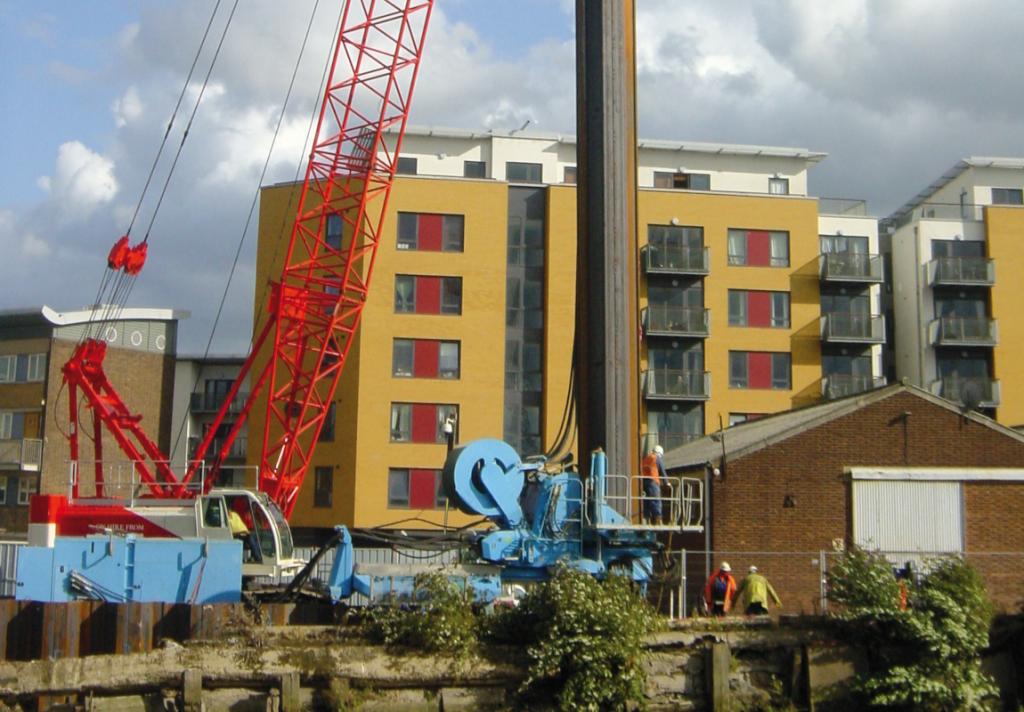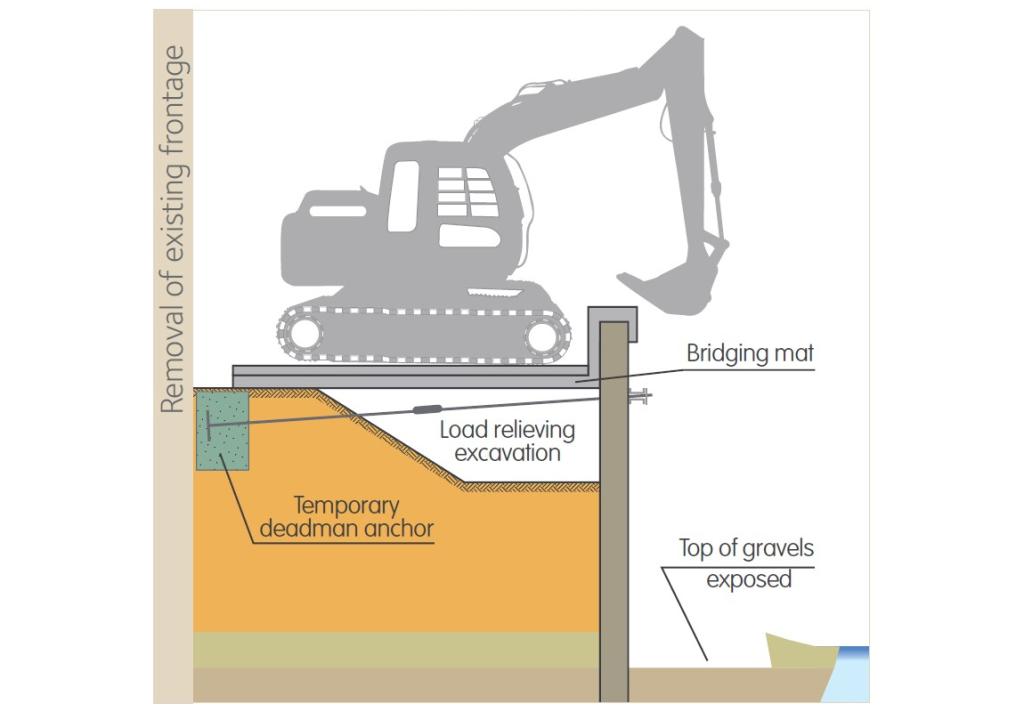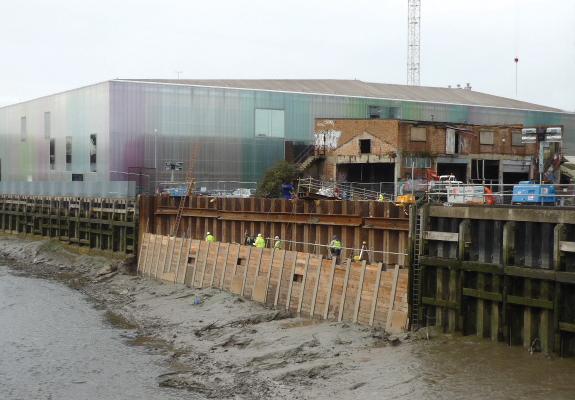Flood Defences in Deptford Creek, UK | 2012
Innovative flood defences on deptford Creek's river Thames tributary
Deptford Creek is a tributary of the Thames in London inside the Thames Barrier. In order to protect an estimated 33 000 households from flooding, the Environment Agency identified five Wharves along Deptford Creek for immediate replacement. Existing anchored timber pile structures were assessed to be reaching a stage where failure was imminent. The five identified locations were Kent Wharf, Ash’s Wharf, Thanet Wharf, Hilton’s Wharf and Saxon Wharf.
At the highest frontage the 109 m long Hilton’s Wharf has a retained face of 7 m. Future development plans for the site precluded the use of permanent anchors to support the new wall and so an innovative solution facilitating a composite wall system (propped structure) was engineered by Jacobs / Volker Stevin.
Download
 English
English







